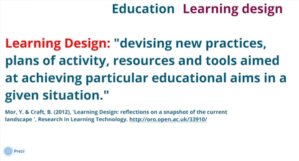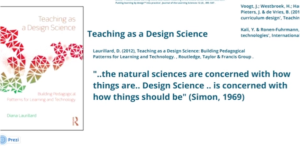 When I saw the title for the Week 2 topic – Enforcing Independence – my immediate thoughts were ‘Oh no – here we go again – another one of Dave’s provocative statements’, and ‘Of course you can’t ‘enforce’ independence’.
When I saw the title for the Week 2 topic – Enforcing Independence – my immediate thoughts were ‘Oh no – here we go again – another one of Dave’s provocative statements’, and ‘Of course you can’t ‘enforce’ independence’.
Other people in the P2PU forum seem to have had similar thoughts, some people have dismissed the idea out of hand and others appear to have completely ignored it, going off down their own rhizomatic paths. But Dave has given us an example of what he means by ‘enforced independence’ by sharing his syllabus for his f2f course ED366 Educational Technology and the Adult Learner, which he says is an example of how he tries to balance the enforcement.
Having read this document, I find myself, as with the topic ‘cheating as learning’ last week, not opposed to the underlying reasoning, but thinking that both ‘enforce’ and ‘independence’ are once again the wrong words.
By independence I assume we mean ‘capable of thinking or acting for oneself’ . Well yes we want learners to be able to do this. How would this be exemplified?
The thought that immediately comes to mind is that in nursery school we want little children to be able to put their own coats on, take themselves to the toilet and so on. But more than this we want them to be capable of deciding when they need to put a coat on and when they need to go to the toilet. And beyond this we want them to have the freedom to make their own choices and take the consequences of those choices, and this is what I would call learner autonomy – which I see as different to independence and more what I would aspire to.
Dependence is not necessarily a problem. Some learners, for example those with special needs, will always need to be dependent on others to support them, but they can still be autonomous – free to make their own choices.
And as some have already mentioned in the P2PU forum, we don’t necessarily want learners to be isolated from each other, but rather learn to learn through interdependence.
In Dave’s course that he has shared with us, learners seem to have some autonomy, some choices that they can make, but is there scope for more? That would be my question. Ultimately we want learners to be able to make their own choices. This might mean that the learner chooses not to comply with course requirements if the learner thinks that is in his best interests. This level of autonomy is very challenging for teachers, who even when they build choices into the curriculum, still tend to have some sort of a surround safety net which they hope learners will not fall through. I used to admire those students who were able to say – ‘Sorry, but this is not for me’, recognized their own autonomy and acted on it removing themselves from the course – but of course this autonomy had a negative effect on my programme’s retention figures! Just in this one example you can see the tensions that autonomy can raise for a teacher.
Despite this, I would prefer the aspiration of autonomy rather than independence. Independence implies cutting the apron strings, but autonomy is not about casting adrift – more about freedom.
And I don’t think autonomy can be enforced – otherwise it wouldn’t be about choice!
I don’t think Dave has ‘enforced independence’ on his students. I think what he has done, as he is doing in this course, is to create the conditions in which learners have opportunities to exercise their autonomy. Autonomy is not black and white, but comes in degrees on a scale of less to more. We can’t make people autonomous or independent. Any attempt to do this would be to consolidate the teacher’s position as based on a whole set of power structures, further creating a reliance on the teacher for setting objectives, assessing progress and giving direction.
But we can model what we mean by independence and/or autonomous learning, as Dave is doing in this course. We can provide the opportunities and learning environment in which autonomy is fostered, but then we have to let learners make their own choices. You don’t need mature learners for this. One of the best places to see this interdependence and autonomy in action is in a nursery classroom, where the teaching approach is based on a High Scope Curriculum and where
The most important segment of the daily routine is the plan-do-review sequence, in which children make choices about what they will do, carry out their ideas, and reflect upon their activities with adults and other children.
So autonomy and interdependence are the words for me – not ‘independence’ nor ‘enforce’.


